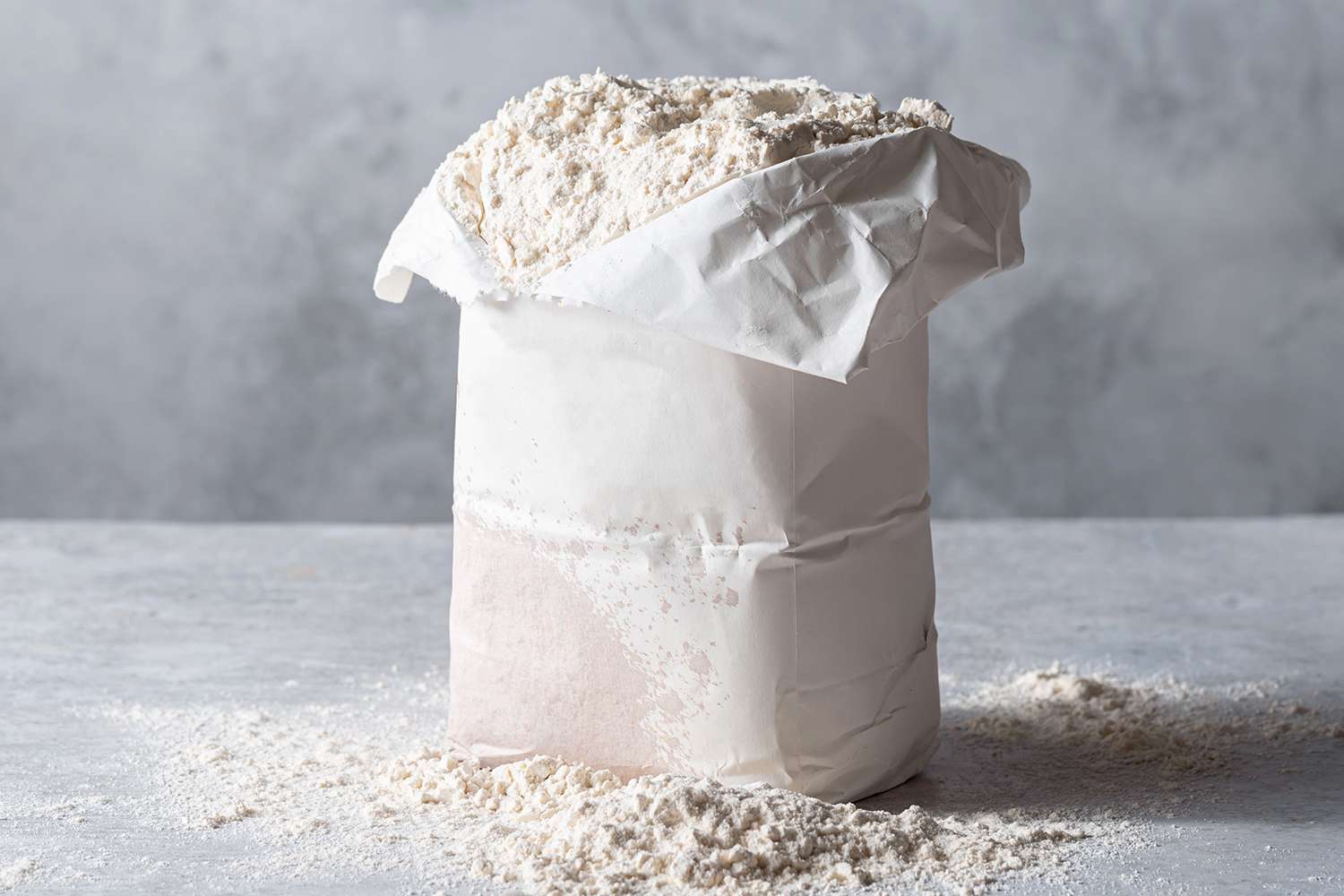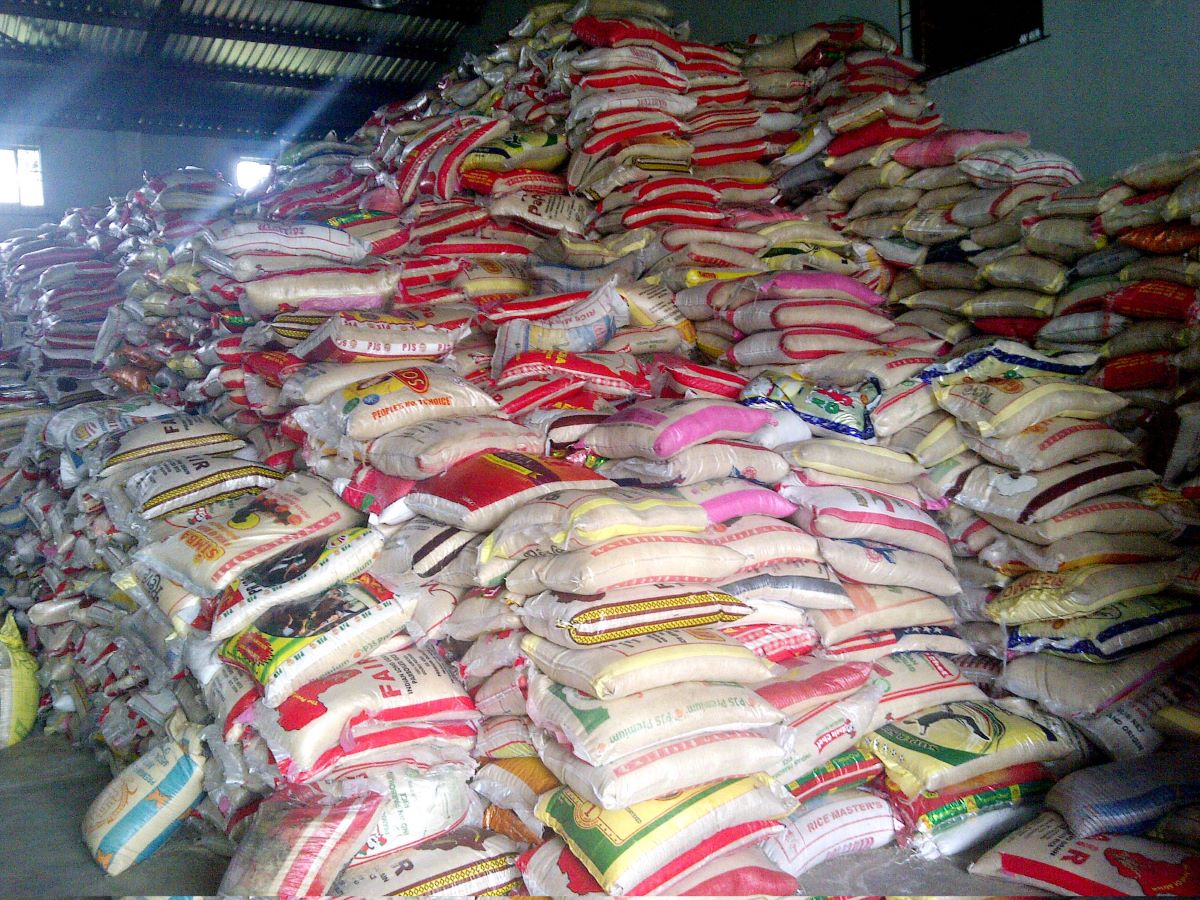

Articles
How To Store Large Amounts Of Rice
Modified: January 6, 2024
Looking for articles on how to store large amounts of rice? Discover expert tips and techniques to keep your rice fresh and perfectly preserved.
(Many of the links in this article redirect to a specific reviewed product. Your purchase of these products through affiliate links helps to generate commission for Storables.com, at no extra cost. Learn more)
Introduction
Storing large amounts of rice is essential for many reasons – from stockpiling for emergencies to maintaining a steady supply for commercial purposes. Rice is a staple food for millions of people around the world, and proper storage is crucial to ensure its freshness, prevent spoilage, and maintain its nutritional value.
In this article, we will explore the best practices for storing large amounts of rice. We will discuss the importance of using proper storage containers, controlling temperature and humidity, implementing effective handling and packaging techniques, pest control and prevention, rotation and inventory management, and provide helpful tips for long-term storage.
By following these guidelines, you can ensure that your stored rice remains safe, nutritious, and free from contaminants, allowing you to have peace of mind and a reliable food supply.
Key Takeaways:
- Proper storage containers, temperature/humidity control, handling techniques, pest prevention, and inventory management are crucial for maintaining the quality and longevity of stored rice.
- Choose the right containers, control temperature/humidity, handle and package rice properly, prevent pests, and manage inventory to ensure long-term freshness and reliability of stored rice.
Read more: How To Store Large Amounts Of Water
Proper Storage Containers
The first step to storing large amounts of rice is to choose the right storage containers. The ideal containers should be airtight, moisture-proof, and durable. Here are some recommended options:
- Food-Grade Plastic Buckets: Look for high-density polyethylene (HDPE) buckets with tight-fitting lids. These buckets are sturdy, lightweight, and easy to stack. Make sure they are food-grade and free from any chemicals or contaminants.
- Mylar Bags: Mylar bags are made from a polyester film laminated with aluminum foil, providing excellent protection against oxygen, moisture, and pests. They are available in various sizes and can be heat-sealed for extra security.
- Glass Jars: Glass jars with airtight lids are another option for storing smaller quantities of rice. They are transparent, making it easy to see the contents, and are non-porous, ensuring no odors or flavors are transferred.
- Metal Containers: Stainless steel or tin containers with tight-fitting lids can also be used for rice storage. They are durable, rust-resistant, and protect against light and moisture.
When choosing containers, consider the size and quantity of the rice you plan to store. It’s best to use smaller containers to minimize oxygen exposure whenever you open the storage. Additionally, ensure that the containers are clean and dry before filling them with rice to avoid any contamination.
Label all containers with the date of storage to help with rotation and inventory management. It’s also a good idea to store rice in manageable portions that fit your household or business needs to minimize waste and ensure freshness.
By using appropriate storage containers, you can protect your rice from moisture, pests, and other external factors that can compromise its quality and shelf life.
Temperature and Humidity Control
Proper temperature and humidity control are essential for maintaining the quality and longevity of stored rice. Here are some tips to help you create the optimal storage environment:
Temperature: Rice should be stored in a cool and dry place. The ideal temperature for rice storage is around 70°F (21°C). Avoid exposing rice to extreme temperatures or fluctuations, as this can lead to spoilage and the growth of mold or bacteria. Keep in mind that higher temperatures can accelerate the aging process and decrease the shelf life of the rice.
Humidity: Rice is highly sensitive to moisture, so it is crucial to store it in a low-humidity environment. The relative humidity should be below 15% to prevent moisture absorption and the development of mold or insect infestations. If the humidity is higher in your storage area, consider using moisture absorbers such as silica gel packets to help maintain a dry environment.
It’s important to note that rice exposed to high humidity can become sticky or develop a sour smell. On the other hand, very low humidity can cause the rice grains to become dry and brittle.
Avoid storing rice in areas prone to moisture, such as basements, attics, or near water sources. Additionally, keep rice away from direct sunlight, as exposure to UV rays can lead to nutrient degradation and discoloration.
Monitoring the temperature and humidity levels regularly is essential. Use a thermometer and a hygrometer to ensure that the storage conditions are ideal for rice preservation. Make any necessary adjustments to maintain a consistent environment for long-term storage.
By controlling temperature and humidity, you can prevent moisture-related issues and preserve the quality and freshness of your stored rice for an extended period.
Handling and Packaging Techniques
The way you handle and package the rice before storage plays a crucial role in maintaining its quality and preventing contamination. Here are some recommended handling and packaging techniques:
Handle with Clean Hands: Always wash your hands thoroughly before handling rice. This helps prevent the transfer of dirt, bacteria, or other contaminants onto the grains.
Inspect for Foreign Objects: Before packaging the rice, carefully inspect it for any foreign objects, such as stones, insects, or debris. Removing these unwanted items ensures that your stored rice remains pure and free from potential hazards.
Opt for Vacuum Sealing: Vacuum sealing is an effective method to remove air from the packaging and create airtight conditions. This helps to preserve the freshness of the rice and prevent the growth of mold or pests. Use a vacuum sealer machine or vacuum sealing bags to package smaller portions of rice.
Use Oxygen Absorbers: Oxygen absorbers are small packets that contain iron powder, which absorbs oxygen and helps maintain an oxygen-free environment within the packaging. This can significantly extend the shelf life of rice by preventing oxidation, insect infestation, and the growth of microorganisms.
Consider Freezing: For long-term storage, you can also freeze rice. Divide the rice into appropriate portions and place them in airtight freezer bags. Freezing helps to maintain the quality and nutritional value of the rice for an extended period. Ensure that the rice is fully thawed before cooking.
Label and Date: Proper labeling is crucial for inventory management and rotation. Clearly label each package with the type of rice and the date of storage. This allows you to keep track of the age of the rice and consume the older stock first.
Remember to handle the rice with care to avoid damaging the grains. Rough handling or excessive agitation can result in broken or crushed rice grains, affecting their overall quality.
By implementing these handling and packaging techniques, you can ensure that your stored rice remains uncontaminated, fresh, and ready for future use.
Store large amounts of rice in a cool, dry place in airtight containers to prevent moisture and pests. Consider using food-grade buckets or vacuum-sealed bags for long-term storage.
Pest Control and Prevention
Pests can pose a significant threat to stored rice, causing damage, contamination, and spoilage. Implementing effective pest control and prevention measures is crucial to safeguard your rice supply. Here are some tips to help you keep pests away:
Proper Storage Hygiene: Maintaining cleanliness in your storage area is essential to prevent pest infestations. Regularly clean the storage containers, shelves, and surrounding areas to remove any food particles or residue that may attract pests.
Seal Entry Points: Inspect your storage area for any cracks, gaps, or openings that can serve as entry points for pests. Seal these openings using caulk, weatherstripping, or other suitable materials to prevent pests from entering.
Use Pest-Resistant Packaging: Consider using pest-resistant packaging materials, such as mylar bags or metal containers, to create a barrier against pests. These materials are less prone to being chewed through or penetrated by insects.
Store Rice Off the Ground: Elevate your storage containers off the ground to reduce the risk of pest infestation. Pests, such as rodents or insects, are less likely to reach the stored rice when it is kept at a higher level.
Regular Inspections: Routinely inspect your stored rice for any signs of pests, including droppings, chew marks, or webbing. Take immediate action if pests are detected, using appropriate methods to eliminate them and prevent further infestation.
Consider Natural Pest Control Methods: If you prefer to use natural methods, consider using botanical insecticides, such as neem oil or diatomaceous earth. These products are derived from natural sources and can be effective in repelling or eliminating pests.
Proper Pest Disposal: If you encounter pests in your storage area, it is important to dispose of them properly. Seal them in a bag and dispose of them in an outdoor trash bin to prevent them from returning to the storage area.
Remember that prevention is key when it comes to pest control. By implementing these measures consistently, you can significantly reduce the risk of pests damaging your stored rice supply.
Read more: How To Store Large Amounts Of Soil
Rotation and Inventory Management
Proper rotation and inventory management are crucial for maintaining the quality and freshness of your stored rice. Here are some tips to help you effectively manage your rice supply:
First-In, First-Out (FIFO) Method: Implement the FIFO method to ensure that the oldest stock of rice is used first. When filling your storage containers, place the newer batches of rice at the back and the older ones at the front. This helps prevent rice from sitting in storage for too long and ensures that it is consumed before it reaches its expiration date.
Regular Inspections: Regularly inspect your rice stockpile to check for any signs of spoilage, insect infestation, or degradation in quality. This allows you to identify any issues early on and take appropriate action, such as discarding affected rice or adjusting storage conditions.
Record Keeping: Keep a detailed record of your rice inventory, including the quantity, date of storage, and expiration dates. This helps you stay organized and prevents any rice from being forgotten or overlooked.
Monitoring Expiration Dates: Take note of the expiration dates on the rice packaging and prioritize the use of rice that is nearing its expiration date. This ensures that you consume it before it loses its quality or nutritional value.
Regular Usage: Incorporate your stored rice into your regular meal planning and cooking routines. Use it in your everyday meals to prevent it from sitting in storage for too long. This also allows you to rotate your stock efficiently.
Quality Control: Pay attention to the quality of the rice you are storing. If you notice any signs of spoilage, off odors, or unusual discoloration, it may indicate that the rice is no longer safe for consumption. Discard any rice that appears to be compromised to maintain a high-quality stock of rice.
Periodic Stock Rotation: Periodically review your rice stockpile and reorganize it if necessary. Take the time to rotate the containers, ensuring that older batches are used first and newer ones are moved to the back of the storage area.
By implementing proper rotation and inventory management practices, you can ensure that your stored rice remains fresh, safe for consumption, and avoids wastage.
Tips for Long-Term Storage
When storing rice for the long term, it’s important to take extra precautions to maintain its quality and usability. Here are some valuable tips to help you with long-term rice storage:
Choose the Right Variety: Certain varieties of rice are better suited for long-term storage due to their lower moisture content and longer shelf life. White rice, jasmine rice, and basmati rice are known for their extended storage capabilities. Avoid storing rice with high moisture content, such as brown rice, as it has a shorter shelf life.
Packaging with Oxygen Absorbers: When storing rice for an extended period, consider using oxygen absorbers in your packaging. These small packets help remove oxygen and maintain a low-oxygen environment, preventing oxidation and extending the shelf life of the rice.
Control Temperature and Humidity: It’s crucial to maintain a cool, dry, and stable environment for long-term rice storage. Keep the storage area at a consistent temperature of around 70°F (21°C) and humidity below 15%. Fluctuations in temperature and high humidity can affect the quality and longevity of the rice.
Inspect and Rotate Regularly: Even in long-term storage, it’s important to periodically inspect your rice for any signs of spoilage or infestation. Rotate your stock, using the FIFO method, to ensure that older batches are consumed or replaced to maintain freshness.
Consider Freezing: If you plan to store rice for an exceptionally long time, consider freezing it. Divide the rice into appropriate portions and store them in airtight freezer bags. Freezing helps to preserve the quality of the rice and extend its shelf life beyond traditional methods.
Proper Sealing and Packaging: Ensure that your rice is stored in airtight containers or packaging to prevent moisture, pests, and contaminants from entering. Use high-quality plastic buckets, Mylar bags, or metal containers with tight-fitting lids to create a barrier against external factors.
Label and Date: Properly label your storage containers with the type of rice and the date of storage. This helps with inventory management and ensures that you consume older stock first, maintaining a fresh supply of rice.
Monitor Over Time: Regularly check on your stored rice to ensure that it remains in good condition. Look for any signs of mold, pests, or changes in smell or appearance. If there are any concerns, take appropriate action to prevent further issues.
By following these tips, you can optimize the long-term storage of your rice, ensuring that it remains safe, nutritious, and usable for an extended period.
Conclusion
Storing large amounts of rice requires proper planning, preparation, and attention to detail. By following the guidelines and best practices discussed in this article, you can ensure that your stored rice remains fresh, safe for consumption, and of high quality.
Using the right storage containers, controlling temperature and humidity, implementing proper handling and packaging techniques, practicing effective pest control and prevention measures, and implementing rotation and inventory management strategies are all essential elements of successful rice storage.
Remember to choose your storage containers wisely, opt for airtight and moisture-proof options such as food-grade plastic buckets or mylar bags. Control the temperature and humidity levels in your storage area to prevent spoilage and maintain the nutritional value of the rice. Implement proper handling and packaging techniques to keep the rice free from contaminants and maintain its quality. Take measures to prevent pests from infesting your rice supply, and regularly inspect and rotate your stock to ensure that you consume older rice first.
Additionally, if you plan on storing rice for the long term, consider using oxygen absorbers, freezing smaller portions, and properly labeling your containers for easy inventory management.
By following these steps and consistently maintaining proper storage practices, you can successfully store large amounts of rice, ensuring its long-term freshness, while also providing a reliable food supply for emergencies or commercial purposes.
So, invest the time and effort into implementing these strategies, and enjoy the peace of mind that comes with having a well-stored and dependable supply of rice.
Frequently Asked Questions about How To Store Large Amounts Of Rice
Was this page helpful?
At Storables.com, we guarantee accurate and reliable information. Our content, validated by Expert Board Contributors, is crafted following stringent Editorial Policies. We're committed to providing you with well-researched, expert-backed insights for all your informational needs.















0 thoughts on “How To Store Large Amounts Of Rice”